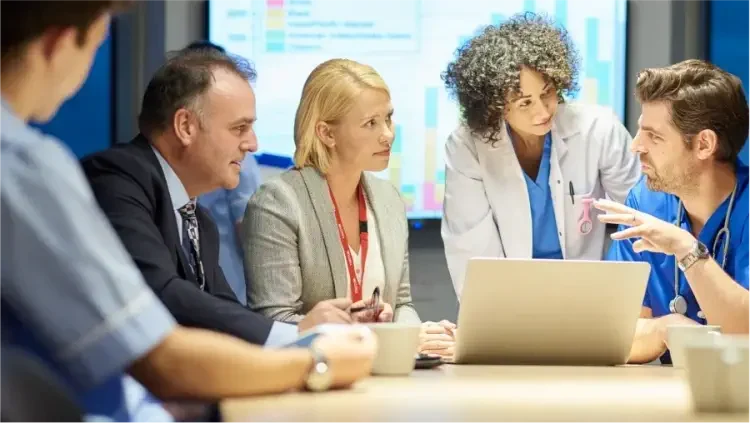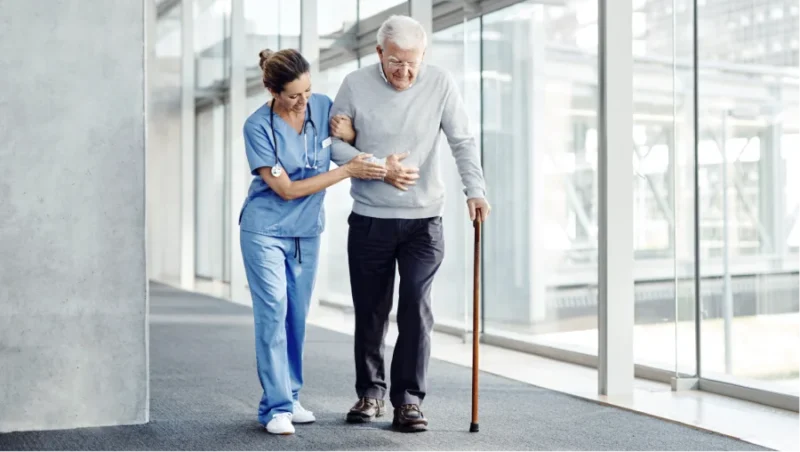asset tracking

Enhancing Safety and Efficiency with Real-Time Location Systems
Healthcare facilities across the United States operate under constant pressure to deliver superior patient care, improve operational efficiency, and maintain strict regulatory compliance. In this dynamic environment, every second and every resource counts. Real-Time Location Systems (RTLS) have emerged as a transformative technology, providing a powerful solution that gives administrators and clinical staff unprecedented visibility into their operations. Far beyond simple tracking, RTLS is creating smarter, safer, and more streamlined environments in both hospitals, ambulatory facilities, and senior living communities.
What is RTLS and Why Does it Matter in Healthcare?
Think of RTLS as an indoor GPS for your healthcare facility. It's a combination of hardware (small tags or badges) and software that can pinpoint the exact location of tagged equipment, patients, and staff in real-time. These tags transmit signals to a network of sensors placed throughout the building, which then feed the location data into a central platform. This system turns physical movements and interactions into actionable digital data, allowing for smarter, data-driven decisions that elevate both patient care and operational performance. For facilities striving for operational excellence, implementing an RTLS solution is no longer a luxury—it's a foundational component of the modern "smart" hospital.
Key Applications of RTLS in Modern Healthcare Facilities
Streamlining Hospital Asset Management
A significant challenge for hospitals is managing a vast inventory of mobile medical equipment. Studies show that between 10% and 20% of a hospital's mobile assets are lost or stolen during their operational life. Furthermore, nurses can spend up to an hour per shift searching for essential equipment like IV pumps, wheelchairs, or ventilators, resulting in billions of dollars in lost productivity annually. With real-time asset tracking, staff can instantly locate any tagged item on a digital map, drastically reducing search times, preventing loss, and ensuring that critical equipment is available when needed. This improved visibility also helps optimize equipment utilization and streamline maintenance schedules.
Bolstering Staff Safety and Support
The safety of healthcare professionals is paramount. RTLS provides a powerful tool for protecting staff from workplace incidents. By equipping personnel with discreet, wearable duress badges, facilities can enable them to send an immediate, silent alert to security with the push of a button. The system instantly provides the employee's precise location, allowing for a rapid response that can de-escalate situations and prevent harm. This level of RTLS-powered staff protection not only improves safety but also fosters a greater sense of security among care teams.
Automating Workflows and Improving Patient Throughput
Bottlenecks in patient flow can lead to long wait times, reduced patient satisfaction, and inefficient use of resources. RTLS can help by triggering automated alerts and tasks based on location data. For instance, when a patient is discharged, the system can automatically notify housekeeping that the room is ready for cleaning. By monitoring the entire patient journey, from admission to discharge, healthcare workflow automation helps identify inefficiencies and streamline processes. This leads to shorter wait times, optimized bed turnover, and a smoother experience for both patients and staff.
Did You Know?
- Studies show that some nurses spend the equivalent of 40 hours per month just searching for equipment.
- U.S. hospitals lose between 10-20% of their mobile medical equipment each year, which can cost millions annually.
- Automating routine tasks with RTLS allows staff to dedicate more time to direct patient care, which can improve patient satisfaction and outcomes.
Beyond the Hospital: RTLS in Senior Living
The applications of RTLS extend powerfully into senior care environments, where resident safety and quality of life are top priorities. The technology is instrumental in wander management, allowing facilities to create safe zones and receive instant alerts if a resident with cognitive impairments approaches an exit or unsafe area. This provides peace of mind for families and enables residents to move freely within a secure environment. Additionally, RTLS can automate and verify staff rounding, ensuring that residents receive timely checks and care according to their personalized plans.
The Power of RTLS Data and Analytics
The true value of an RTLS platform lies not just in real-time location data but in the wealth of analytics it generates. By analyzing movement patterns, equipment utilization rates, and staff interaction times, administrators can uncover deep insights into their operations. This data can reveal bottlenecks, optimize staffing levels, and inform better capital expenditure decisions. Furthermore, RTLS is critical for environmental monitoring, automatically logging temperatures of refrigerators and freezers to ensure that vaccines, blood products, and lab samples are stored safely and in compliance with regulations. The comprehensive reporting from an RTLS analytics platform provides the documentation needed for compliance audits and continuous quality improvement.
Ready to Transform Your Healthcare Operations?
Discover how ZulaFly's cloud-hosted RTLS platform can enhance safety, streamline workflows, and provide complete visibility across your organization. Let us show you how to turn real-time data into your most valuable asset.
Frequently Asked Questions
What is the difference between RTLS and RFID?
While related, they serve different functions. RFID (Radio-Frequency Identification) is a technology often used for "checkpoint" tracking, where a tag is scanned as it passes a reader. RTLS (Real-Time Location System) provides continuous, automatic location tracking of a tag within a defined area, offering much richer, real-time visibility without the need for manual scanning at specific points.
How difficult is it to implement an RTLS solution in an active hospital?
Modern RTLS solutions are designed for minimal disruption. Cloud-based platforms and wireless infrastructure components significantly reduce the complexity and time required for installation. A phased approach, focusing on one high-priority use case at a time (like asset tracking in the emergency department), allows facilities to see value quickly while scaling the system across the enterprise over time.
Can RTLS integrate with our existing EMR or other hospital systems?
Yes, leading RTLS platforms are built with integration in mind. Using APIs (Application Programming Interfaces), RTLS data can be shared with Electronic Medical Record (EMR) systems, Computerized Maintenance Management Systems (CMMS), nurse call systems, and other platforms. This integration amplifies the value of the data, automating documentation and creating more seamless workflows.



